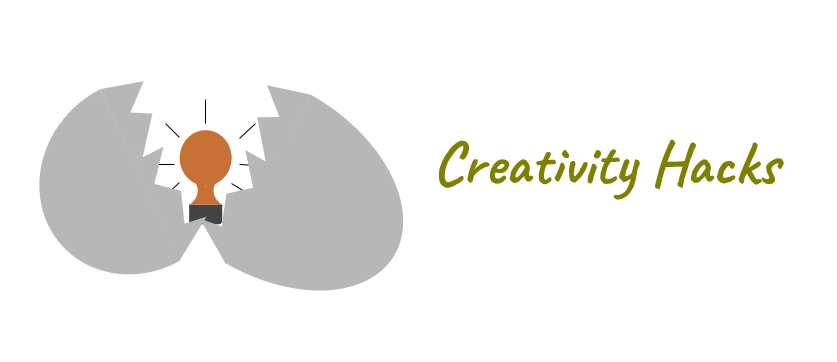We are starting a new blog category called “Creativity Hacks”. Each blog will contain one concrete technique that can be used in the classroom to help bring out student creativity. Our first one is a technique to help students find underlying assumptions they hold.
About The Hack
A highly effective creativity technique is to reverse a commonly-held assumption which often gives radically new insights.
When we teach our invention class one of the tasks we give students is to find an assumption they are making about the object of their innovation. As a warm up activity, we play a game called “Opposite Day”, where students work in teams and pick an assumption to reverse and present their solution to the rest of the class in about 5 minutes. For example, if the assumption is “Tables have legs”, then students have to reverse it (“Tables don’t have legs”) and then find a design or a situation where the reversal will make sense. When we gave this prompt to one group, they came up with a table that is held up with wires attached to the ceiling and can be lowered when needed or raised to make more space in the room.
The nice thing about this technique is that it often gives very original ideas that one would normally not come up with. However, we found that while older students (middle school and up) are reasonably comfortable with coming up with assumptions themselves, elementary students have a harder time. They are able to come up with solutions once an assumption is given to them, but finding an underlying assumption itself is tricky.
This brings us to a creativity hack we discovered. We found that asking students to first draw their object and then question each part of their drawing makes it easier for them to identify assumptions they can subsequently work with. We all hold mental models of objects that reflect commonly found real world implementations. By doodling we bring to surface the salient features of the object model, which can then be used to generate new ideas.
Summary
Finally, here is a quick summary of the creativity hack and how to use it with students.
| Description | Doodling your idea can help surface assumptions you hold about the object or idea. Once surfaced, it’s easier to reverse those assumptions and get new insights. |
| Example | If you ask students to draw a table they will typically draw a rectangular surface with four legs. They then question each part – “Should tables have four or any legs?”, “Does the tabletop have to be one flat surface?”. Examining each question can give students fresh ideas and insights for designing a new kind of table. |
| Tips | Give students <1min to doodle their object in order to bring out the most common held model.Reiterate to students that the quality of the drawing isn’t important but drawing all parts is. |
| Extensions | While we have used this technique on concrete objects (invention, design thinking), it is possible to extend this to abstract concepts like biases. For example, if students are asked to doodle a scientist, do most of them draw a man in a lab coat? If so, it can lead to a good discussion about women as scientists and different kinds of scientific disciplines. |

